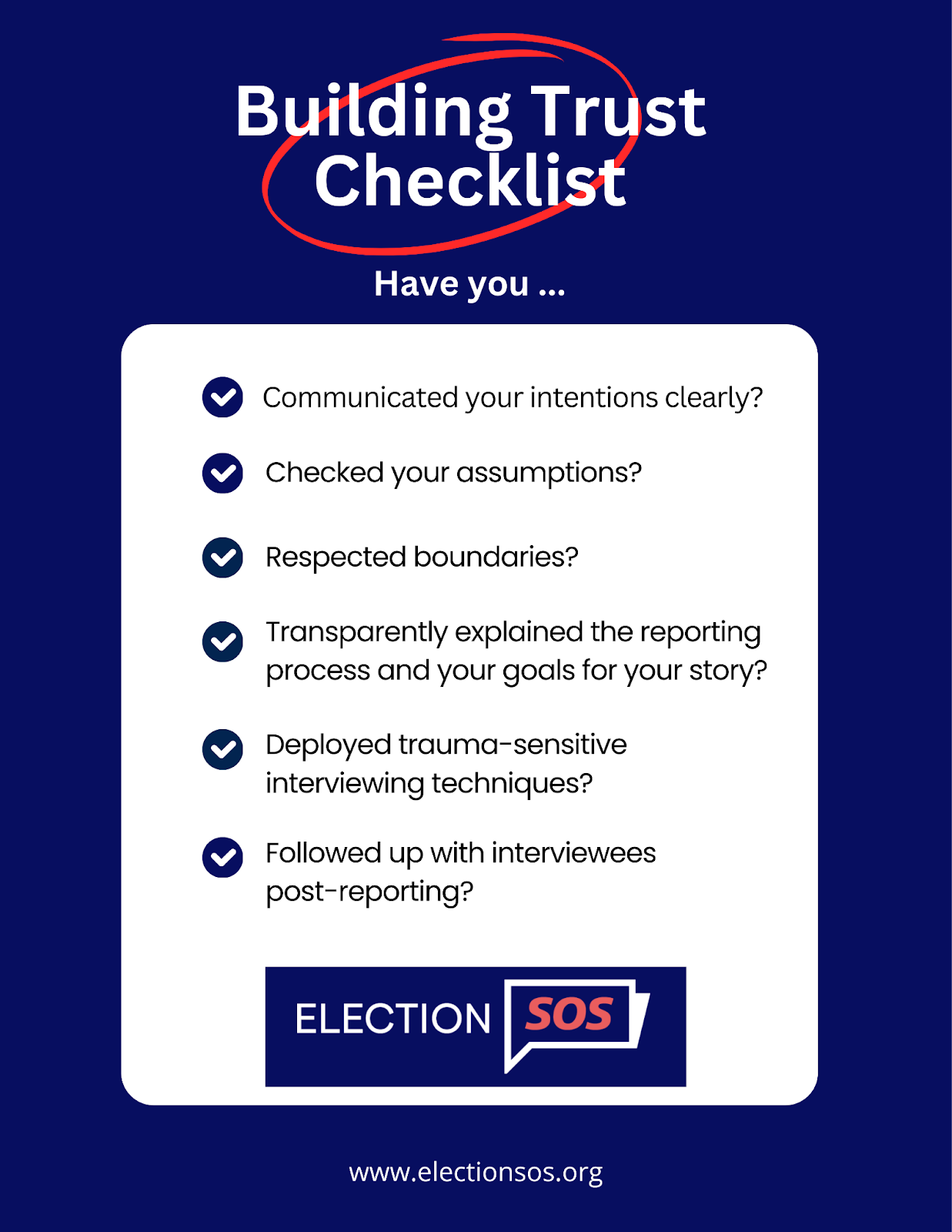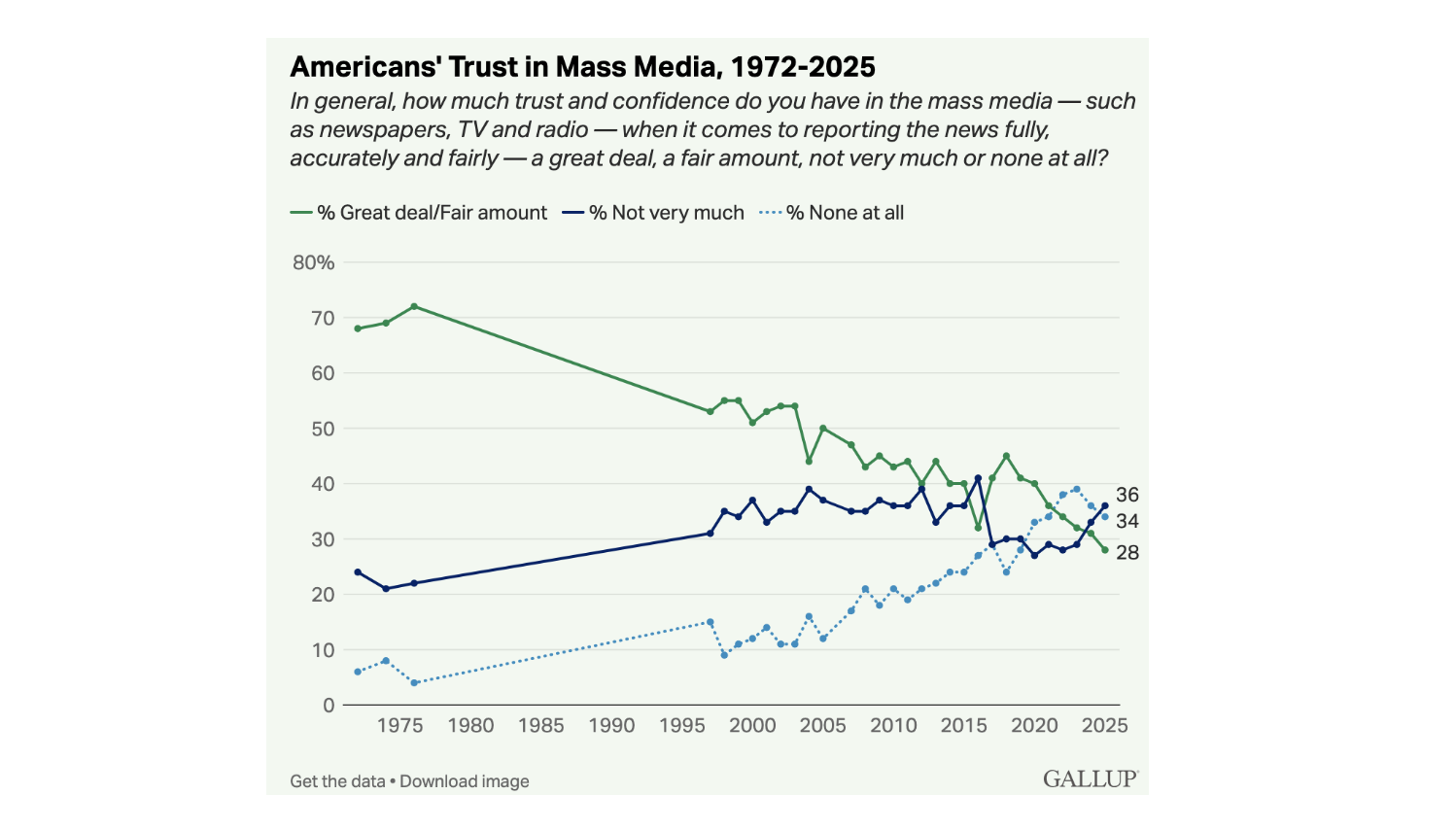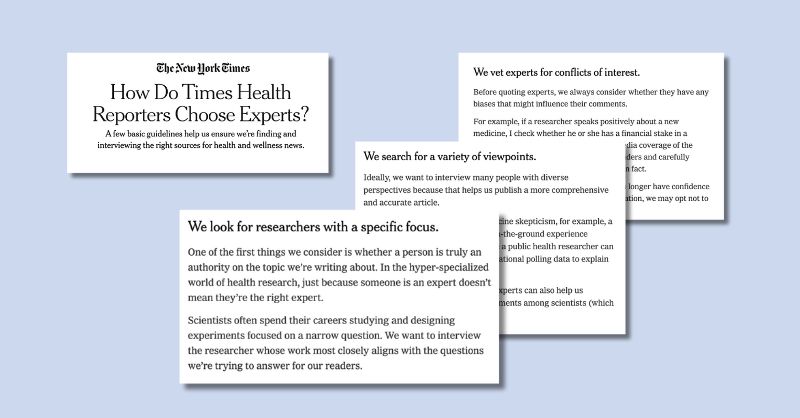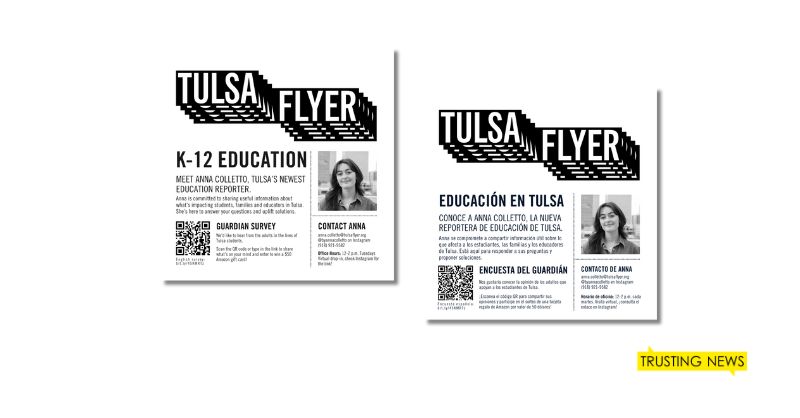
Hearken released a thoughtful guide on how journalists can cover pro-Palestine communities more responsibly
Use this guide for responsible coverage of pro-Palestinian communities
Some major news organizations have been criticized for their reporting on the Middle East, with some critics saying news outlets are showing a pro-Israel bias.
In response, Hearken, one of the journalism support organizations we often collaborate with, released a thoughtful guide on how journalists can cover pro-Palestine communities more responsibly.
Hearken digital producer Massarah Mikati and founder Jennifer Brandel compiled the guide to help support journalists “ground themselves in ethical approaches to coverage of the complex situation happening,” they write. (To understand more of the reasoning behind this guide, we suggest reading the thoughtful introduction that explains the goals and mission.)
Journalists’ coverage of this issue has the opportunity to impact the upcoming election, making it all the more important for journalists to produce fair, ethical and nuanced coverage. And with any criticism or assumption made about the media, there’s an opportunity for journalists to respond with transparency and to tell a different story about their approach and reporting.
We’re taking today’s newsletter to share highlights from Hearken’s guide and pair them with some Trusting News strategies and resources so you can do just that.
Keep reading for highlights or jump over to Hearken’s guide here.
Build trust with potential sources
As the Hearken team reminds journalists, this is a community that has deep distrust in mainstream media, whether because of perceived bias or a very real history of harmful coverage of marginalized communities.
Their suggestions are good to keep in mind when reporting on any marginalized or vulnerable communities. Particularly, the reminder that “nobody owes you their story,” as they write in the guide.
Instead, Hearken suggests you:
- Be upfront and clear in communicating your intentions, of the story and your intent for the community.
- Empathize and acknowledge their hesitancy in talking with journalists. Too often journalists parachute in and expect people to be open to sharing their points of view. Instead, be upfront and acknowledge past harm, and then explain how you plan to build a non-extractive relationship.
- Get transparent with sources by explaining elements of the reporting process, like who else you plan to interview and the story-editing and publishing process, to help set expectations.
At Trusting News, we often remind journalists that being a source in news coverage comes with a lot of potential downsides — for people’s reputations, businesses and even safety.
By getting clear about how your goals behind the coverage, how you plan to use their information and how it will aid in telling a larger story can make being a source feel less risky and more transparent.
We have more guidance on how to do this in this Sourcing Trust Kit, and recommend you use this checklist from Hearken as well.

Lean into people’s complexities
Everyone has complicated, complex, sometimes even contradicting beliefs and layers. And even though we know certain groups of people feel flattened out by news coverage, journalists still contribute to that problem all the time. We use easy, catch-all descriptions to label people or generalize how entire groups of people think or feel.
As Joy wrote about recently, the more descriptors journalists can use to describe someone and their beliefs, the more we can highlight people’s complexities and the more opportunities we offer people to find commonalities and connections.
This is a great list of questions Hearken suggests you can ask interviewees to ensure you are gathering a nuanced, accurate narrative for your coverage:
- What is oversimplified about this conflict?
- What do you want to understand about the other side? What do you want others to understand about you?
- What’s the question nobody is asking?
- Who are the people nobody is talking to, or the viewpoints nobody has captured?
- What do you want to know about this controversy that you don’t already know?
- Where do you feel torn?
Our Anti-Polarization Checklist also has a list of questions to ask internally to help you think about the nuance of the labels and farming you’re using.
Be mindful of language
One thing our Trusting News team has learned through research is that the words journalists use really matter. Quick language choices, especially in headlines, can quickly and unconsciously signal bias in our coverage.
Hearken’s tips align with what we’ve learned working alongside researchers and partner newsrooms — that news consumers prefer when journalists use clear, direct and even sterile language. Some other great recommendations from Hearken:
- Be careful and consistent with your word choice of how you describe each side
- Be careful not to equate anti-Zionism with antisemitism
- Use active, not passive, language (i.e. don’t say Palestinians died, say they were killed and when known, by whom).
We have two Trusting News resources that might also help.
- We worked with partner newsrooms to compile a list of potentially polarizing words you might want to steer clear of.
- We also have a headline checklist to help you examine how the headlines might be perceived by people with different values and experiences.
Copy Hearken’s transparency
The guide starts with an author’s note from Massarah Mikati, where she shares how growing up as an Arab American Muslim who saw first-hand how the media misrepresented and harmed communities of color has helped inform her work as a journalist and also helped inform this guide.
At Trusting News, we talk a lot about how journalists can use who they are as a superpower for connection. (We recently just wrote about how an LGBTQ+ reporter at The 19th does this.) We know it’s not always appropriate, but when your own values and identity directly inform who you are as a journalist and your coverage, it can be a radical empathy builder to be transparent about that with your audience.
Big thanks to Massarah, Jennifer Brandel and the Hearken team for compiling this guide.
You can check out the whole guide here, which has additional pieces we didn’t highlight in our newsletter today — like how journalists can avoid doxxing, tips for providing more context in your reporting, and specific guidance on story framing.
At Trusting News, we learn how people decide what news to trust and turn that knowledge into actionable strategies for journalists. We train and empower journalists to take responsibility for demonstrating credibility and actively earning trust through transparency and engagement. Learn more about our work, vision and team. Subscribe to our Trust Tips newsletter. Follow us on Twitter and LinkedIn.

Project manager Mollie Muchna (she/her) has spent the last 10 years working in audience and engagement journalism in local newsrooms across the Southwest. She lives in Tucson, Arizona, where she is also an adjunct professor at the University of Arizona’s School of Journalism. She can be reached at mollie@trustingnews.org and on Twitter @molliemuchna.



